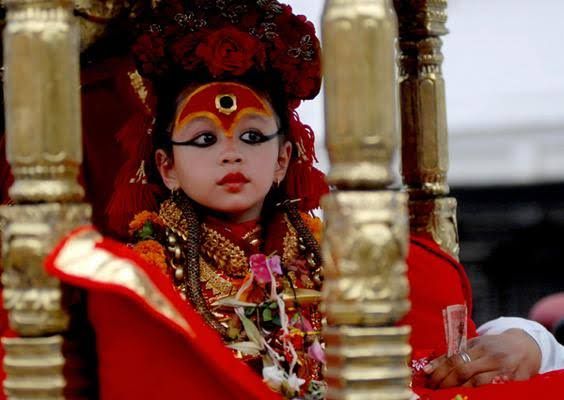Royal Kumari Of Nepal: Divine Tradition Or Child Abuse?
Apr 01, 2019 • 472 views
Childhood should be carefree playing in the sun not living a nightmare in the darkness of the soul. - David Pelzer
Every country has unique family traditions. The country Nepal has a long tradition of worshipping prepubescent girls, known as ‘Kumari’. A manifestation of divine energy, the ‘Kumari’ represents the spirit and power of the Talegu goddess, an important Hindu goddess who is believed to be chief protectress of the royal lineage, and virgin mother of the world. The Royal ‘Kumari’ is always chosen from the Newar Shakya clan. The selection ritual of Kumari is overseen by Buddhist and royal priests and royal astrologer. The girl must be of sound body and mind, have clear skin, baby teeth and must not have begun menstruating. She must also possess “Battis Lakshan” 32-body perfections to become the future ‘Kumari’.
On the night of Kalratri, the nominated girl then undergoes an extraordinary test. Only that girl who is able to pass by one hundred and eight buffaloes and goats, that have been sacrificed to the Goddess Durga, with a calm demeanor is believed to be a true incarnation of the Goddess and is rightfully selected. The most important requirement is that the girl has never had her periods. A ‘Kumari’ loses her divine power and is returned back to life as an ordinary girl as soon as she starts menstruating.
After being selected, they are made to reside in isolation in the temple, known as the Kumari Ghar. She can speak to no one except her caretaker or close family member. Although family members can visit her, she must not be touched and a certain distance has to be maintained.There are only fifteen days a year when the Royal Kumari comes out from her temple for festivals. One of these is Kumari Jatra, the largest public festival in Kathmandu. Always carried in caretaker’s lap or covered palanquin, the Royal Kumari’s feet must never touch the ground. It is otherwise seen as an act of impurity.

Everyday upon her throne, the goddess spends hours blessing people. Throughout her public appearance, she must maintain a grave expression on her face and talk to no one. She is not even allowed to smile. There has been a backlash against this century old tradition by the Human rights and Children rights activists of Nepal who see it as ‘child labour’. There have been protests to stop this tradition but the court ruled against it. Many see it as violation of child’s rights.
Girls as young as three-four years old are taken away from their parents on being chosen as ‘Kumari’ and are kept in isolation for around ten-twelve years, till the time they hit puberty. The tradition is also built upon the old age understanding of menstruation as being impure. Interviews with Ex-Kumaris clearly show that this transition is hard for them and often leaves a mental scar. Also, the process of choosing the ‘Kumari’ can be seen as sexist as it re-invents and reiterates the stereotypes of ideal, female body.
Trishna Shakya is the current Kumari of Kathmandu. Trishna was just three years old when she was declared the new ‘Kumari’. Has she embarked upon a journey of divinity or exploitation in the name of religion? Let us know your views in discussion column below.
Click on this link to know more: https://www.youtube.com/watch?v=vNmFjbF4gwE
